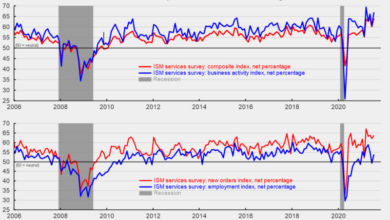Prices Have Work To Do, Even in Pandemics

“Prices,” said the economist Benjamin Anderson, “have work to do. Prices should be free to tell the truth.” With Covid cases rising, places like Los Angeles reinstating outdoor mask mandates, and social media bursting with even more indignation than usual about Those People who refuse to wear a mask (or Those People who refuse to leave the house without a mask), it’s time to take a couple of deep breaths and explore the work prices would do if they weren’t actively suppressed.
The important question, as Thomas Sowell explains in his magisterial Knowledge and Decisions, is not “What is to be decided?” Rather, it is “How are decisions to be made, and by whom?” When I first typed this, I wrote “How is the decision to be made,” but then I stopped myself and rewrote because treating the pandemic as if there is One Big Decision to be made–and one Great Mind to make it–is a fundamental mistake. We cannot specify literally everything that could possibly happen, assign probabilities to everything, and then choose the “best” of our nearly infinite options.
People make innumerable decisions based on decentralized knowledge about preferences and possibilities that a single mind or select committee of minds cannot, in principle, have. That this knowledge gets aggregated into prices, norms, and customs that then confront decision-makers as data is an unappreciated marvel.
“The Science,” in this light, is informative but not decisive. It can highlight particular aspects of some of the trade-offs people face, but it can’t tell people which trade-offs to accept and which trade-offs to avoid. Minimizing the risk to our health and safety is just one among many worthy goals that have to be traded off against one another. Importantly, scientific observers cannot have all the knowledge of what F.A. Hayek called “the particular circumstances of time and place” people need to make wise decisions consistent with their own values.
“But there are externalities, which means markets fail to generate the socially optimal outcome!” There absolutely are, and asking students if they got a flu shot and then talking about spillover benefits from vaccination is one of the standard ways I teach the concept. Then we go on to talk about cooperative and coercive solutions. An educational institution, for example, might require proof of vaccination before enrollment or give a discount to students who have been vaccinated. The NFL has a pretty extreme policy in place: players who break Covid protocols will be fined almost $15,000 per offense.
Freeing the markets for health and life insurance would help, too. Replacing political calculation with actuarial calculation would pull together the relevant information about risks and repackage it as higher or lower insurance premiums. If the vaccines are as dangerous as some people on Facebook think they are, we would see higher insurance premiums for the vaccinated. If the vaccine is pretty safe and pretty effective, we would see lower insurance premiums for the vaccinated.
We can expect the same thing in markets for schooling, food, and other goods. A restaurant might add “no mask” to its “no shirt, no shoes, no service” policy. Customers voting with their own money will tell them whether or not they approve of the policy, and whether or not they are making money or losing it will send them a pretty easy-to-interpret message. Insurance markets obviously wouldn’t get it right all the time, but I would expect them to do a lot better than internet conspiracy theorists (or pundits) who don’t have nearly as much skin in the game. Your imagination can run wild with scary “what-if” scenarios, but as Alex Tabarrok explained, “A Bet is a Tax on BS.” People think twice about acting on hysterical predictions when it’s costly.
As much as it flatters our conceit to think otherwise, we cannot plan other people’s lives or predict what will happen in fine-grained detail. This is a rhetorical handicap, especially given that people have very strong medical and political imaginations but very weak commercial imaginations. It’s easy to believe people won’t do “the right thing” unless they are forced to. It is a lot harder to accept that there isn’t a well-defined, discoverable “right thing” independent of the unarticulated social consensus reflected in norms, prices, and other practices. Just because you don’t know exactly how people will solve a problem doesn’t mean that they won’t, however. Elinor Ostrom’s work provides a lot of examples of how solutions to collective action problems bubble up from the bottom without having to be imposed from the top down.
At just about every step of the way, governments have suppressed prices and put limits on people’s ability to come up with creative ways to solve the problems the pandemic poses. The “failure” hasn’t been the failure of otherwise-unregulated market prices to fully reflect all the relevant costs and benefits of vaccination, serving restaurant meals, or what have you. It has been the government’s failure to not let market prices work at all and instead address the pandemic with command-and-control policies that have created shortages, thwarted innovation, and distributed vaccines based not on what will most internalize the spillover benefits of vaccination but based on political considerations about who should enjoy the private benefits of vaccination. The problem isn’t that the prices are telling the wrong story. It’s that the prices largely aren’t telling any story at all because they are being actively suppressed.
The post Prices Have Work To Do, Even in Pandemics was first published by the American Institute for Economic Research (AIER), and is republished here with permission. Please support their efforts.



